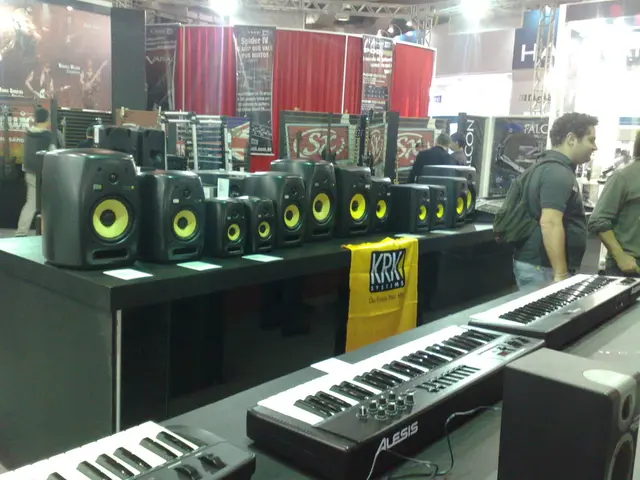Considering the cost-cutting measures of the family-owned James Halstead enterprise, the question remains whether it's wise to make a purchase.
James Halstead (AIM: JHD) Faces Mixed Outlook Amidst Challenges
In the ever-changing world of business, one company that has weathered the storm for over a century is James Halstead. Founded in Manchester in 1915, this multigenerational family business has navigated through various economic upheavals to emerge stronger each time.
Recently, James Halstead reported a year of profitable growth, with pre-tax profits growing by almost 8%. However, the net profit declined due to a higher effective tax rate. Despite this, the company's financial strength has allowed its management team to make astute investments, ensuring the company remains operationally solid.
Unfortunately, the share price of James Halstead has taken a hit. The fall in price is primarily due to higher inflation and supply-chain difficulties that began in 2022. These issues were exacerbated by the Russian invasion of Ukraine, a spike in the oil price, bottlenecks in global supply chains, and increased costs for shipping. As a result, the shares of James Halstead reached an all-time high in early 2022 at a price just over 300p but have since fallen to a level below 200p.
The company's performance over the last couple of years has been lacklustre due to these supply-chain disruptions. However, the company's balance sheet remains far stronger than needed, allowing it to exploit opportunities that its competitors can't. The net cash on James Halstead's balance sheet is usually more than a year's profits.
James Halstead is popular in IHT portfolios due to its tax advantages and strong performance. Business Property Relief (BPR) can be claimed on property, buildings, machinery, and unlisted shares, including stocks listed on AIM, such as James Halstead. However, the new government is considering changing IHT rules, which could potentially affect James Halstead's shareholder base.
Investors seeking tax-efficient holdings should monitor these developments closely, as any tightening might reduce the attractiveness of AIM stocks such as JHD.
Despite the recent challenges, James Halstead offers a strong dividend yield of approximately 5.7%, which places it in the top quartile of UK dividend payers. However, this dividend is not well covered by free cash flow, with a high payout ratio of around 95%. This raises questions about the long-term sustainability of the dividend if earnings or cash flow continue to pressure.
In conclusion, the current outlook for James Halstead (AIM: JHD) stock is mixed but leans cautious due to recent poor performance, declining revenue, and concerns about dividend sustainability despite a strong dividend yield. However, its strong dividend yield, solid management, and balance sheet support a cautiously optimistic longer-term view if business conditions stabilize. Investors sensitive to tax relief changes like BPR should monitor developments closely, as any tightening might reduce the attractiveness of AIM stocks such as JHD.
[1] Financial Times: James Halstead shares fall 7% as profit warning overshadows interim results [2] Reuters: James Halstead warns of lower profits due to supply chain disruptions [3] City A.M.: James Halstead expects profits to fall as it battles supply chain issues [4] Morningstar: James Halstead plc Dividend Analysis [5] The Motley Fool: James Halstead plc: A Dividend Stock to Buy Now?
Read also:
- Digestive issues and heart discomfort: Root causes and associated health conditions
- Bile duct cancer prognosis: examination of survival rates, remission, and additional aspects
- Intense Discussion: UK Gambling Taxesis on the Rise
- Minnesota's Gambling Transformation: Tracing the Path from Illegality to Authorization








